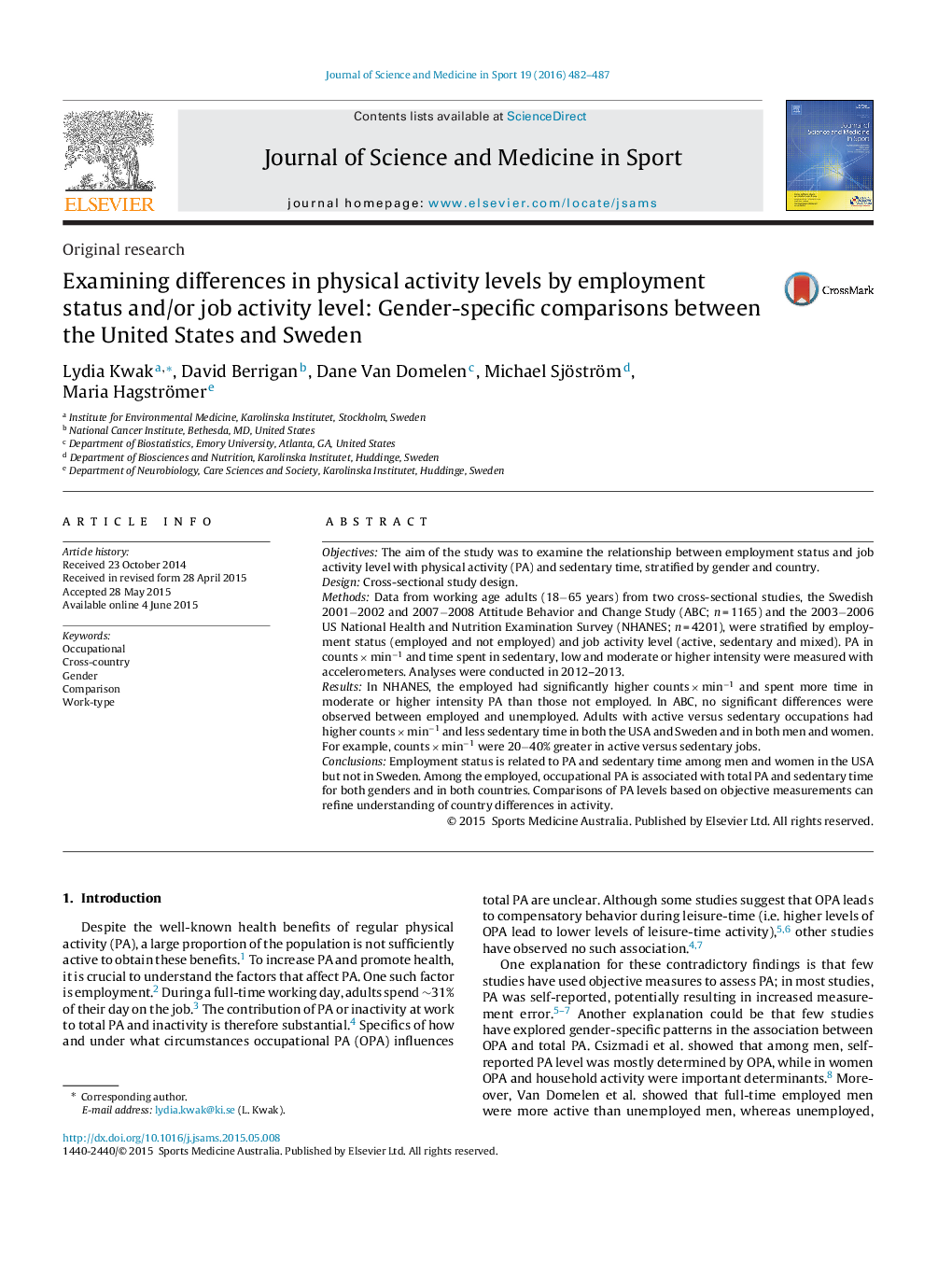| Article ID | Journal | Published Year | Pages | File Type |
|---|---|---|---|---|
| 2703807 | Journal of Science and Medicine in Sport | 2016 | 6 Pages |
ObjectivesThe aim of the study was to examine the relationship between employment status and job activity level with physical activity (PA) and sedentary time, stratified by gender and country.DesignCross-sectional study design.MethodsData from working age adults (18−65 years) from two cross-sectional studies, the Swedish 2001−2002 and 2007−2008 Attitude Behavior and Change Study (ABC; n = 1165) and the 2003−2006 US National Health and Nutrition Examination Survey (NHANES; n = 4201), were stratified by employment status (employed and not employed) and job activity level (active, sedentary and mixed). PA in counts × min−1 and time spent in sedentary, low and moderate or higher intensity were measured with accelerometers. Analyses were conducted in 2012–2013.ResultsIn NHANES, the employed had significantly higher counts × min−1 and spent more time in moderate or higher intensity PA than those not employed. In ABC, no significant differences were observed between employed and unemployed. Adults with active versus sedentary occupations had higher counts × min−1 and less sedentary time in both the USA and Sweden and in both men and women. For example, counts × min−1 were 20−40% greater in active versus sedentary jobs.ConclusionsEmployment status is related to PA and sedentary time among men and women in the USA but not in Sweden. Among the employed, occupational PA is associated with total PA and sedentary time for both genders and in both countries. Comparisons of PA levels based on objective measurements can refine understanding of country differences in activity.
